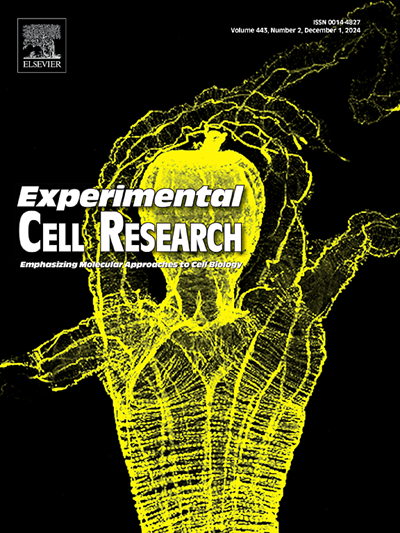Differential expression of endothelial derived galectins in response to shear stress
IF 3.3
3区 生物学
Q3 CELL BIOLOGY
引用次数: 0
Abstract
Background
Endothelial cells function as mechanosensors, dynamically altering their functional response based on varying shear stress/flow patterns to maintain vascular homeostasis. Disturbed flow leads to endothelium dysfunction, promoting conditions such as atherosclerosis. Understanding the molecular impact of flow is crucial for the development of new therapeutic targets for vascular diseases. Galectins have been implicated in vascular diseases, specifically their role in inflammation. However, the regulation of endothelial galectins by shear stress remains unexplored.
Methods
Galectin gene and protein expression were analysed from publicly available datasets or in human umbilical endothelial cells (HUVEC) and human arterial endothelial cells (HAEC) cultured under either shear stress induced by orbital shaking or static conditions by qPCR, immunofluorescence imaging and ELISA.
Results
Laminar shear stress upregulated LGALS9 and downregulated LGALS1, while disturbed flow reversed these effects. Complex shear environments significantly increased Gal-3 and Gal-9 expression at both gene and protein levels, with distinct variations in surface expression and secretion. In vivo single-cell RNA sequencing (scRNAseq) revealed reduced Lgals9 expression in endothelial cells exposed to disturbed flow in carotid artery ligation models compared to laminar flow.
Significance
These findings highlight that endothelial galectin expression is shear-regulated, which has significant implications for understanding galectin biology and there potential as therapeutic targets in vascular diseases influenced by shear stress.
内皮源性凝集素在剪切应力下的差异表达
内皮细胞具有机械传感器的功能,可根据不同的剪切应力/血流模式动态改变其功能反应,以维持血管稳态。血流紊乱导致内皮功能障碍,促进动脉粥样硬化等疾病。了解血流的分子影响对于开发新的血管疾病治疗靶点至关重要。半乳糖凝集素与血管疾病有关,特别是它们在炎症中的作用。然而,剪切应力对内皮凝集素的调节仍未被探索。方法利用qPCR、免疫荧光成像和ELISA技术,分析在轨道振动剪切应力和静态剪切应力下培养的人脐带内皮细胞(HUVEC)和人动脉内皮细胞(HAEC)中半乳糖凝集素基因和蛋白的表达情况。结果涡旋剪切应力上调LGALS9,下调LGALS1,而扰动流动逆转了这一作用。复杂剪切环境显著提高了Gal-3和Gal-9在基因和蛋白水平上的表达,但在表面表达和分泌上存在明显差异。体内单细胞RNA测序(scRNAseq)显示,与层流相比,颈动脉结扎模型中暴露于干扰血流的内皮细胞中Lgals9的表达降低。这些发现强调了内皮细胞凝血素的表达受剪切调控,这对理解凝血素的生物学特性以及作为受剪切胁迫影响的血管疾病的治疗靶点具有重要意义。
本文章由计算机程序翻译,如有差异,请以英文原文为准。
求助全文
约1分钟内获得全文
求助全文
来源期刊

Experimental cell research
医学-细胞生物学
CiteScore
7.20
自引率
0.00%
发文量
295
审稿时长
30 days
期刊介绍:
Our scope includes but is not limited to areas such as: Chromosome biology; Chromatin and epigenetics; DNA repair; Gene regulation; Nuclear import-export; RNA processing; Non-coding RNAs; Organelle biology; The cytoskeleton; Intracellular trafficking; Cell-cell and cell-matrix interactions; Cell motility and migration; Cell proliferation; Cellular differentiation; Signal transduction; Programmed cell death.
 求助内容:
求助内容: 应助结果提醒方式:
应助结果提醒方式:


